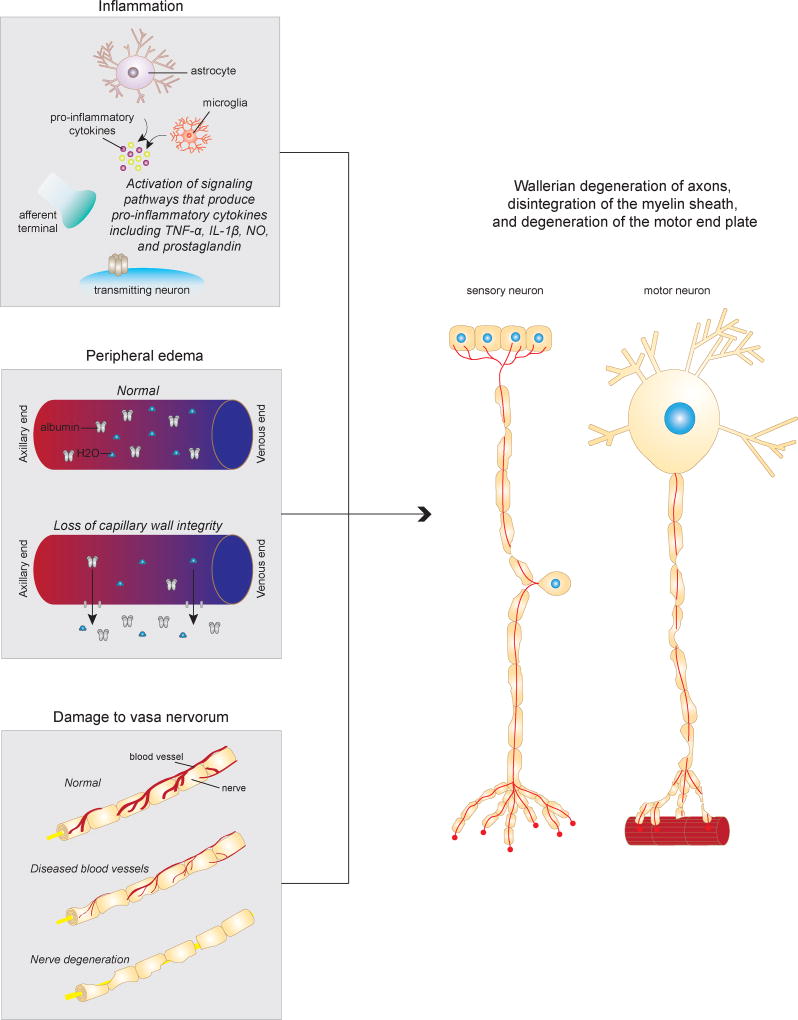Figure 1.
Potential mechanism of peripheral neuropathy following burn injury. Damaged cells release inflammatory cytokines that likely active the inflammatory response pathways. Large molecules from damaged cells increases interstitial oncotic pressure and stimulates fluid loss, leading to edema. The release of cytokines and chemokines due to burn injury also results in platelet aggregation, accelerated fibrin deposition, and clot formation follow burn injury, which can lead to vascular occlusion of the vasa nervorum. The cumulative effect is Wallerian degeneration of axons, disintegration of the myelin sheath, and degeneration of the motor end plate.

